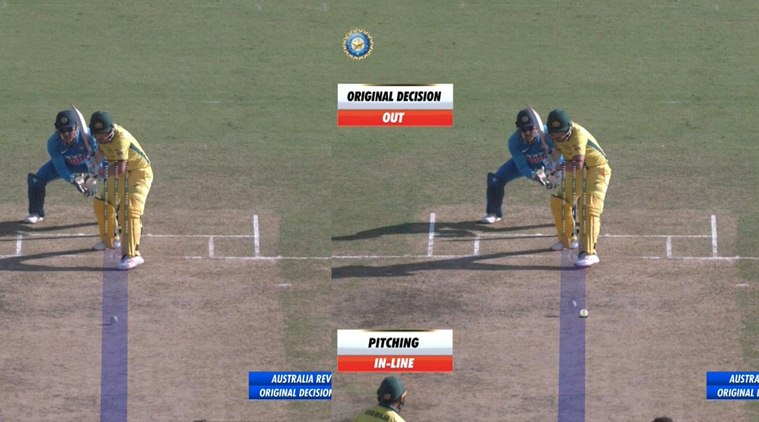
Australian captain Aaron Finch returned to form with a fine knock of 93 in the third one-day international at Ranchi on Friday. However, his dismissal by Kuldeep Yadav triggered a controversy after ball tracking completely missed the position of the real ball while analysing the LBW decision.
What on earth has just happened with the Finch LBW? Ball tracker has the ball pitching somewhere completely different, and that sort of affects the trajectory doesn’t it. Might still be out, but bizarre. #INDvAUS #Finch pic.twitter.com/fDyZR1X0p0
— Raunak Kapoor (@RaunakRK) 8 March 2019
The incident happened in the 31st over the first innings when Finch missed Yadav’s quickish delivery and was struck in front of leg-stump. Ball-tracking showed it to be crashing into middle and leg. However, the computer misjudged the pitching of the ball and showed a new area where it pitched. While the decision would still have been out, it was a bizarre situation nonetheless.
Further, this incident also raises doubts over the validity of the DRS system with fans questioning the technology.
This is not the first time that DRS has courted controversy. In the second T20I between New Zealand and India in January 2019, Daryl Mitchell was at the receiving end when he was declared out despite hotspot revealing a visible mark was visible on the bat.
Among active cricketers, Australia Test skipper Tim Paine has questioned the decision review system, saying it has been “frustrating” to deal with the technology that is “not a perfect system”.
— Tom Garrick (@TomGarrick1) 8 March 2019
“Look, it’s (DRS) not a perfect system and I haven’t got the answers. It’s just frustrating, I’d imagine it’s frustrating for everyone. But it is what it is,” Paine was quoted as saying in the ‘Sydney Morning Herald’.